Here’s how Grant Craies taught a crew a longer rowing stroke.
Coaching ratio in rowing. Photo credit: Worldrowing.com
The crew comprised two novices and a 1-year rower with the coach in bow. While warming up, he noticed that the stroke (who was also steering) lost a lot of length every time they steered the boat.
Question – how to teach the crew the technique to keep a long stroke?
Explain rowing stroke ratio
At a stroke rate of 20 each stroke takes around 3 seconds to complete the power phase and the recovery phase. Since water cannot be compressed by a rowing oar, the amount of time the oar is in the water is approximately the same at stroke rate 20 as at 30 and this is around 0.7 seconds. Therefore the amount of time needed on the recovery phase at a stroke rate of 20 is 2.3 seconds. Start by getting the crew to recognise how long they spend on the recovery compared to the power phase. Do this while rowing full crew at half pressure.
Use all the slide length
Then stop and explain how to ensure you’re using all the length of the slide on the recovery. Make sure they understand that each recovery they need to roll forward on the seat to go to full compression at the catch. The way to check full compression is that each person’s shins are vertical at the catch. Check their foot stretcher adjustment so they can achieve this position.
If not, have a read of Troy Howell’s expert advice.
Why did the crew shorten up?
While rowing, the 3 man was accurately following stroke who shortened up while focusing thinking on the steering and this made the whole crew shorten up as they followed.
The next thing to teach is that the whole crew remains long regardless of external influences (in this case steering). Everyone works individually and together to keep the rhythm and ratio going.
Key here is to ensure the stroke notices they have shortened up and works to lengthen their stroke after completing the steering.
How to teach length in the rowing stroke
Build up the crew from one person rowing to full crew. So the first athlete (stroke or stern pair in sweep) begins rowing alone – keeping up an amount of pressure on the oar. Instruct them to try to keep this pressure in the water as a second and third person joins in.
“Keep the load on your oars and don’t let it slip away as the next person joins in.”
Start from stroke joining in towards the bow and then do the reverse starting from bow.
Get the crew to notice the difference in ratio as more people are rowing – you should have a bigger ratio with more athletes rowing as long as the rating hasn’t gone up because the boat moves faster with more rowers.
To counteract the tendency to rate higher when everyone is rowing now get the crew to exaggerate the ratio change i.e. make the oar move faster through the water and the athlete move slower up the slide. Up one point in rating in the water and down two points in rating on the slide is an easy call to make.
The key to stroke length success
Repetition is essential here. Your crew won’t learn this in one go – do it multiple times through the outing. And do it again in subsequent outings. So call the improved ratio as often as you see the focus slip away from the crew.
Now what could you add to improve this?
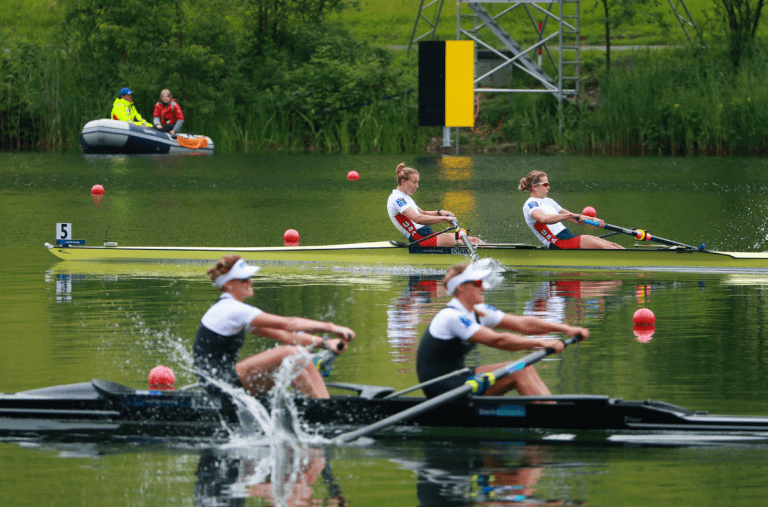
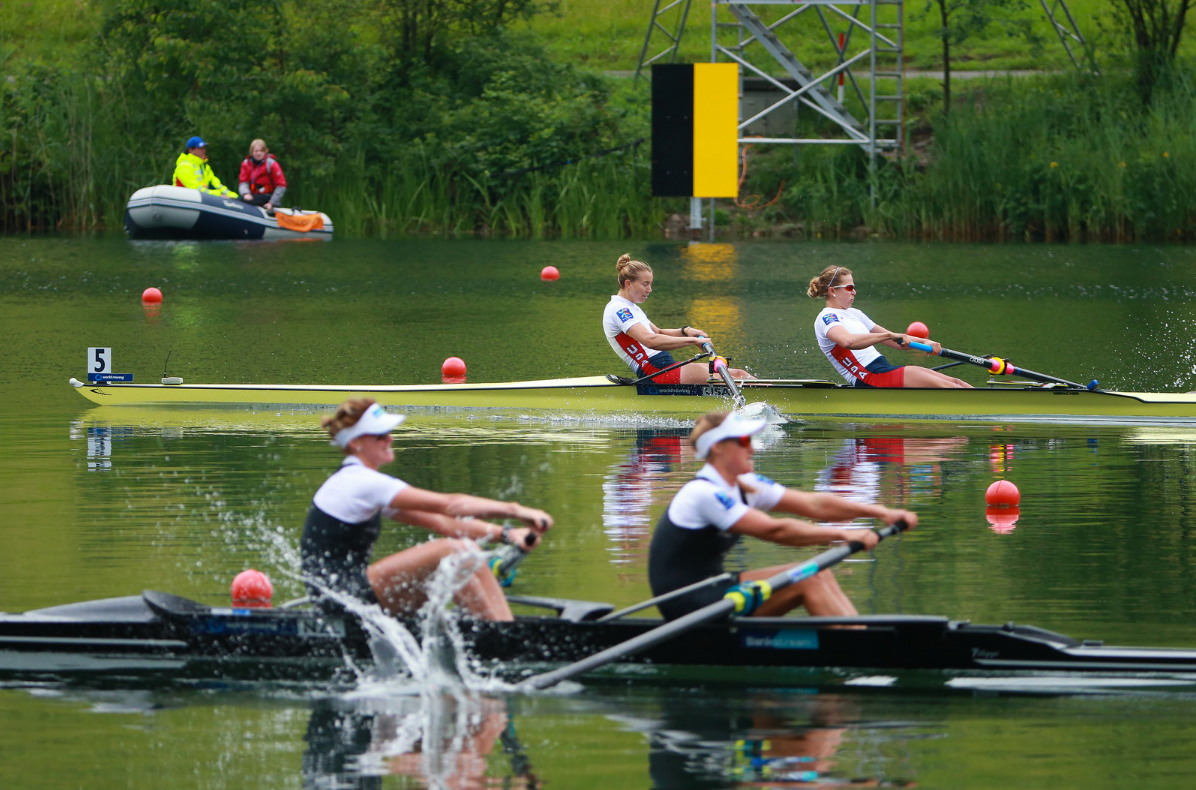
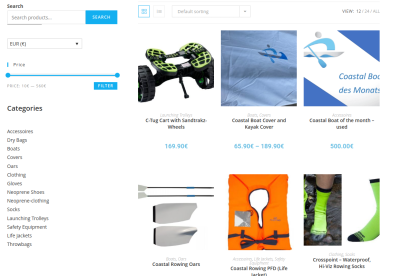

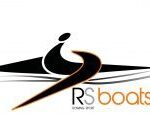

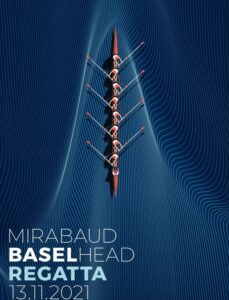


This Post Has 19 Comments
When higher stroke rates are produced by applying more force during the drive (as it should be), the time in the water is shorter at a rate of 30 compared to a rate of 20 and not the same as stated in the article. A higher rate should not be produced by a faster recovery alone. That is apart from the fact that the stroke/recovery ratio has nothing to do with stroke length. Getting to full compression (shins vertical), good use of the backswing (for and aft) and finish as close to the belly as possible does the trick in combination with placing and extracting the blade at the at the most extreme ends of the movement (no driving in or washing out).
Albert – thanks for this great information. Can you find us facts about the time in the water at rate 30?
People don’t now HOW to slow down the recovery and if they can do it it is at the expense of their hand speed. Since you want fast hands away from backstops and then a slower slide rate (as we are coached) you end up with lots of disjointed parts to the stroke. I wonder if the best way to get a slower recovery is to ‘aim for 3/4 slide and then decide to go to full slide at the last moment’…. every stroke?
Caroline – that’s a fine suggestion. Why don’t you try it and tell us what happens?
Caroline – I’ve been coaching adult beginners for a good few years now and have found the following helpful when trying to get them to slow the slide:
1. I explain that the momentum the boat gains subsequent to their stroke is what should be moving them forward from backstops. I encourage (nag!) them to sit still after the blade extraction, and simply move their hands away and let the boat speed push them off backstops This takes some time to instill, I’ll admit. Especially if they’ve developed a rush up the slide already. So…to reinforce the concept….
2. Have them row with their feet out of the shoes. It’s pretty hard to pelt full tilt up the slide when you have nothing against which to pull. This exercise has the added benefit of getting the core muscles properly engaged so as not to fall backwards off the seat at the finish.
3. Another thing you could try is to get them to push down a bit harder with their feet at 3/4 slide. I have had some success with this with a couple of crews. It’s a bit harder to coach this, and almost impossible to see/feel from the cox’s seat, but might be worth a try?
Debbie – thanks those are great suggestions. Tell me for 3 is that pushing done in the power phase of the stroke or the recovery?
Rebecca
Pushing down in the recovery phase. Doing this mostly addresses the tendency to rush the last 1/4 of the recovery, rather than fixing a general rushing of the slide. Beginners in particular get partway up the slide and start to panic about the catch, which makes the last bit of the recovery more frantic than the first part.
Another thing that works well, if you have a crew that can sustain decent pressure for 1k or more, is to row at firm pressure at very low rating. This slows the whole process down enough to encourage long strokes and a full recovery.
I would much appreciate any help you folks can offer a keen but frustrated beginner. So much of this rings bells with my own experience as a beginner, tryig to get adequate length whilst at the same time managing to get a clean feather-square-catch sequence. Despite endless pieces of advice, progressive improvemets in fitness and flexibility, a lot of regular rowing (sculling), I remain an unpredictable force in any quad or double, sadly. Here are a few self-observations from 2 years of trying.
I am 58, started at 55. I am just over 6ft tall, in reasonable shape, quite fit, some excess weight but not what you would call fat. In the gym and on an erg I have no problem with flexibility and compression. For my age I believe I am more flexible than many peope in their 30s, having done stretch/yoga type exercises all my life. I have no older-gent beer belly of any kind.
When I try to do the right thing, feather, blades off the water, doing everything calmly, as intended, I find I can not get enough length before giving in to the compulsion to square and catch quickly. On these occasions I am well aware that my hands are not extended far enough, outside of the boat …. indicating of course that either my seat is not far enough forwards and/or that my forwards lean angle is not great enough.
I have found that I can get good length if I stop worrying too much about blades off the water. In this situation I somehow manage to use the rigger as a counterpoint against which to push and from which to lever myself forwards ….. somehting I can not do with blades off the water. I realise this is not what I should be doing, of course, but as an observation it may help the diagnososis!
Just this weekend however, by accident, I may have stumbled on the key, but not sure. My shoes were so bad they could not contain my feet. I had no choice but to let my feet loose and use my core for recovery. In the process, my feet relocated further back, towards my seat. I found that it was easier to slide further forwards and thereby to reach out further with my hands, resulting n a longer stroke. Of course, I had a lot of problems still because my feet were loose, but it did seem I had changed the basis of my stroke for the better.
DOes this make sense and can anyone make any suggestions for how to build on this experience and find a way forwards. It has been so frustrating not to make progress because of this one essential element.
Thanks in advance.
Paul, I will ask an experienced coach to answer this detailed question.
THanks Rebecca
Hi Paul, Duncan here. I am the coach Rebecca has asked to make some suggestions for you. Here goes.
I would start by looking at the set up in the boat.. You say that you have no problem getting length on the erg and that rowing feet out helped. Firstly lowering your feet and see what a difference, if any, this makes. Next try moving the stretcher towards the bow of the boat. Move the stretcher at least 5 cm as an experiment.
You say ‘ and thereby to reach out further with my hands, resulting n a longer stroke’ I think of length as being achieved by rocking over and then rolling a long way forward.. By this I mean that the recovery sequence is: straighten the arms, rock the body over from the hips, roll the seat forward until the shins are vertical. More emphasis and time spent on the rock over and stretch usually leads to more length.
You tell us you are sculling – in a 1x or a crew boat? A drill to help with length can best be done in a crew boat so others can balance the boat while you work on a specific improvement, In a 2x get you partner to balance the boat while you row with square blades. Start with arms only and check that you are sitting tall and well forward on the seat. When you are happy with your rowing start swinging forward after your arms are nearly straight. Swing till you are leaning forward as you would be at the catch. Next extend the stroke by sliding forward . Initially just a 1/2 slide or so, but as you get to feeling comfortable let the wheels roll further and further until you are packed up with your chest touching your thighs. Finally, when you feel that you are rowing a good length try feathering and make sure you keep you emphasis on rolling well forward, square up early to give yourself plenty of time. When you are happy with how you rowing get your partner to join in and focus on doing the same things despite the new distractions.
Let me know how you get on.
Duncan
Hi Duncan. Thanks so much for taking the time to offer me your advice.
I will certainly try your suggestions re the footplate.
When I said ‘reach out further’ I was referring to the fact that as you move forwards, at the end of the recovery, your hands inevitably move outwards in an arc as you gain length in the stroke – the fact that my hands are often not that far out reflects my problem.
I usually scull in a 4x boat. We actually do the build-up sequence you describe as a warm up, though probably a bit too hurried to be useful for technique improvement. I shall try it in a 2x as soon as I have the opportunity.
One of my problems seems to be when I am feathering (instead of just square blades). Towards the end of recovery I seem unable to continue moving forwards very far onceI have started to square. It’s almost as if my brain can’t multi-task, i.e. square blades = stop movg forwards…. and then I end up takinng the catch too soon!
Anyway, I shall persevere and let you know how I get on.
Thanks again.
Paul
Hi Paul,
I think your comment on multi tasking is the key here. As you approach the catch many things need to happen concurrently: The seat should roll forward to full slide and reverse with minimal pausing, the wrists and fingers square the blades, and the arms lift the handles to place the blades in the water at full reach. I get the impression that your brain has these three separate movements mixed.
Try practising the three movements separately. On the erg first and then in the boat if your crew mates are indulgent enough.
Start by rolling to and from the catch position with the blades off the water, arms outstretched if on the erg. Feel the compression in the legs and the rebound, the spring off the front.
Next roll into the catch and place the blades in the water. Work on getting the blades to enter as your seat reaches the front most point. In the boat do this with the boat still,and the blades flat – slap the blades on the water as you arrive. Get someone to check for you whether the blades touch as your seat reverses, This is not easy – persevere. Develop this to doing it with square blades.
Next go back to the first part of the drill but square the blades before you get there. No entry, just roll forward and square and be ready.
Next try the slap the water at the catch drill, starting from feathered and going to square.
For all of these drills feedback is useful – if there is no coach around try to get a friend to video you.
Have fun.
Duncan
Hi Duncan
Thanks for your further suggestions – very clear instructions and I am going to try working through them – will let you know.
Just one further thing you may be able to clarify for me if you can spare time. For obvious reasons we are always told not to jerk the seat during the rcovery in order to get length …. slow and relaxed is the mantra. Otherwise you exert a force against the movement of the boat and you also upset the rythmn of the crew. My question regards the force behind the momentum for the slide. I get many answers. Often I am told just let the boat move under you and you will naturally slide forward – no need to do anything, whilst others say pull with your feet and others again say the momentum is created as you pivot forwards after the stroke, using your core for ‘thrust’. Like so much in rowing, it seems important to have the right visualisation in your head of what you body should be doing, then to translate this into a natural movement. So for the recovery, what would be the right visuaisation for what is actually meant to be happening. Am I makng the slide happen (if so how) or am I allowing it to happen?
Thanks again
Paul
PS I hope my questions feed into your coaching somehow! I am sure I am not the only one with these challenges 🙂
Duncan Holland MARCH 18, 2017 AT 7:44 PM
REPLY
Hi Paul,
I think your comment on multi tasking is the key here. As you approach the catch many things need to happen concurrently: The seat should roll forward to full slide and reverse with minimal pausing, the wrists and fingers square the blades, and the arms lift the handles to place the blades in the water at full reach. I get the impression that your brain has these three separate movements mixed.
Try practising the three movements separately. On the erg first and then in the boat if your crew mates are indulgent enough.
Start by rolling to and from the catch position with the blades off the water, arms outstretched if on the erg. Feel the compression in the legs and the rebound, the spring off the front.
Next roll into the catch and place the blades in the water. Work on getting the blades to enter as your seat reaches the front most point. In the boat do this with the boat still,and the blades flat – slap the blades on the water as you arrive. Get someone to check for you whether the blades touch as your seat reverses, This is not easy – persevere. Develop this to doing it with square blades.
Next go back to the first part of the drill but square the blades before you get there. No entry, just roll forward and square and be ready.
Next try the slap the water at the catch drill, starting from feathered and going to square.
For all of these drills feedback is useful – if there is no coach around try to get a friend to video you.
Have fun.
Duncan
Greetings.
I would suggest the following technique.
Use a 1:1 work/recovery ratio, and 26+ spm. Breath 2 breaths per stroke – out at catch and release. Relax the back to a comfortable curve, and move the shoulders to about 10′ back and forth.
Feather the blade while, not after, it leaves the water at the release..
Leave about 10′ at the elbow after quickly pushing the feathered blade away . Lift your knees and lean forwards gradually as you pull yourself to the catch. As your torso stops against your knees the momentum of the blades will straighten your arms. As this happens square the blade and at full stretch drop it into the water – entering as your arms rebend and your rebounding torso catches up.
I am only 5’10 tall, and with this technique catch the erg chain just short of the box – a long reach!
This is not a drill!. Do it always.
PS. Try rowing HEELS and feet out to see if you need to pull towards the catch!
Regards
Thanks. Seems very unorthodox technique, eg arms not straight during recovery? But I will give it a go and let you know. Hosting a Head here soon so plenty of opportunities to watch others too 🙂
Greetings.
As we age we need to find energy efficient ways of doing things. It is not necessary to straighten the arms all through the recovery – only to finally drop the blade as far as possible, and this straightening is done by the blade momentum. I layback at the catch – pivoting above the hips, and do a ‘back,legs,arms’ sequence. Arrange for legs and arms to finish together. Legs rebound( no expensive holding down needed), and hands quickly away to clear the knees. Let your whole back curve comfortably. NO PAUSING!!!
Don’t square early, use a 1;1 in/out ratio, at about 26spm. Use a mirror to steer. Fit 20mm heelblocks for constant heel contact , and relax ankles. No calf muscle work. Feather as, not after, the spoon leaves the water. Use 2 breaths per stroke – out at catch and release.
PS. watch the experts!
I’m 69, do 30min ergs daily at 2.08 split., using the above technique.
Have fun!
Greetings. I suggest you ask a top sculler in your club to stroke a 2x with you. Ask him to scull as he NORMALLY does, and COPY him! It’s not really as complicated as we make out on paper!
Have fun.